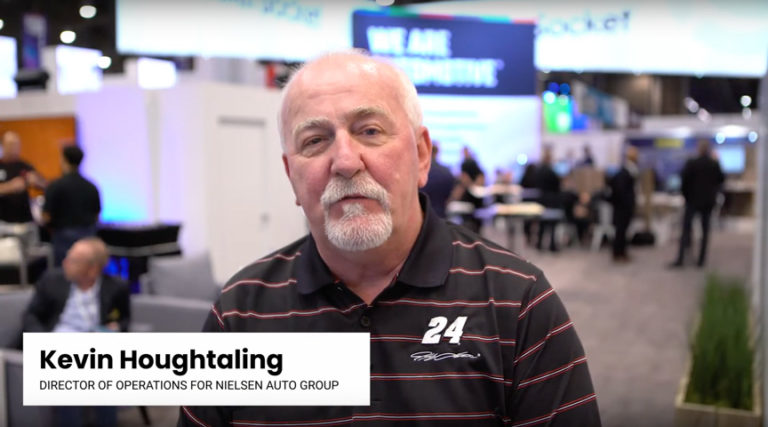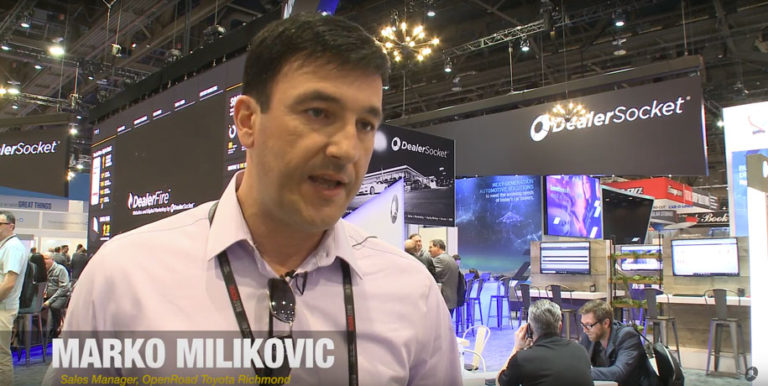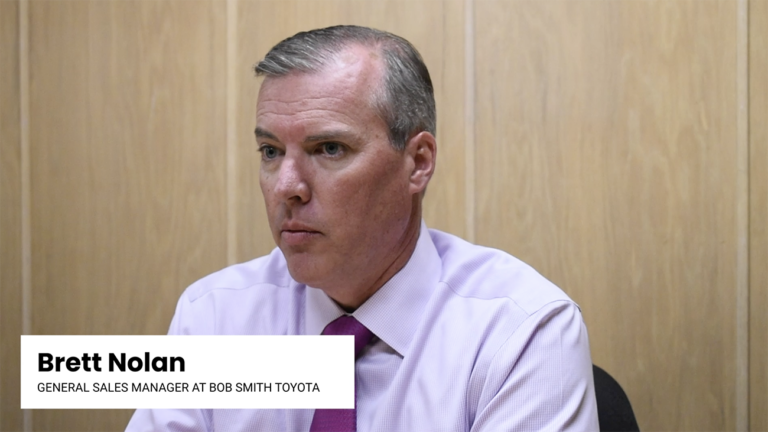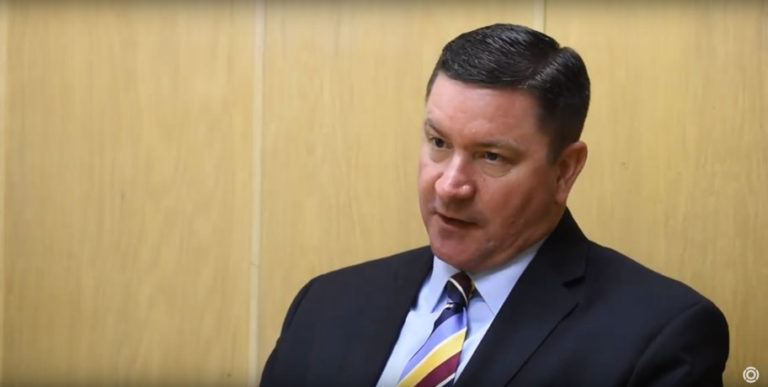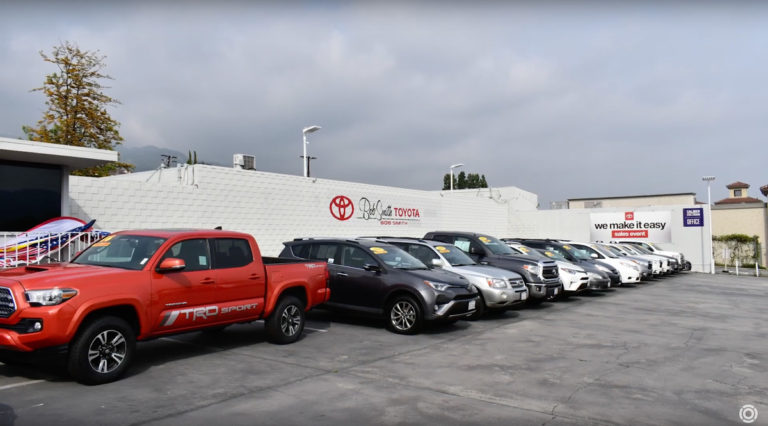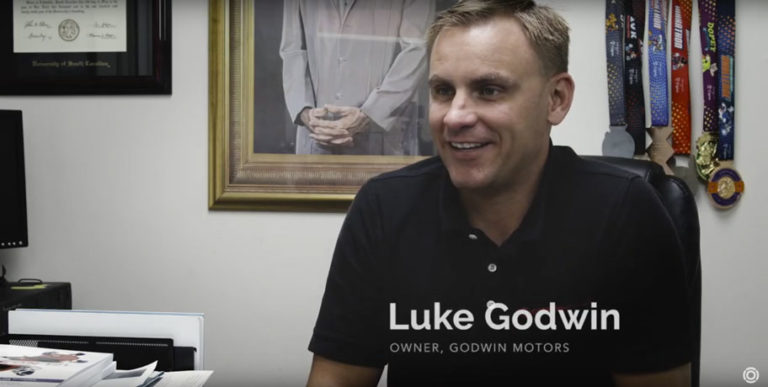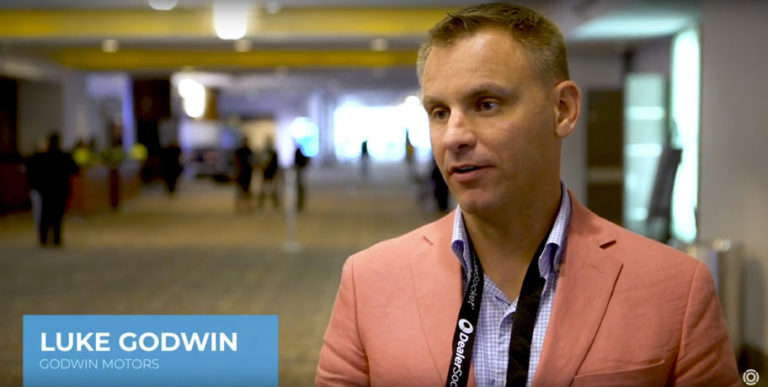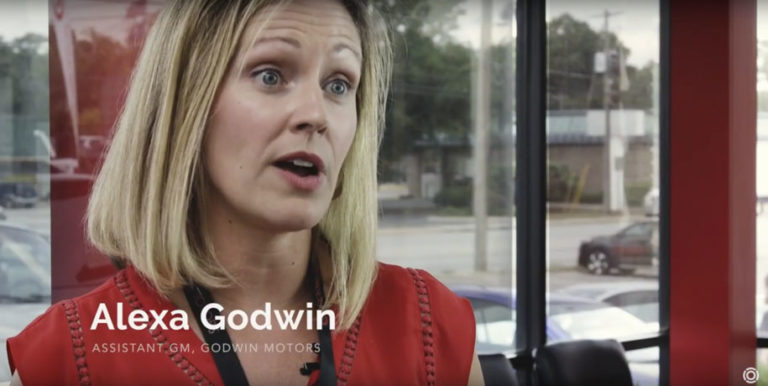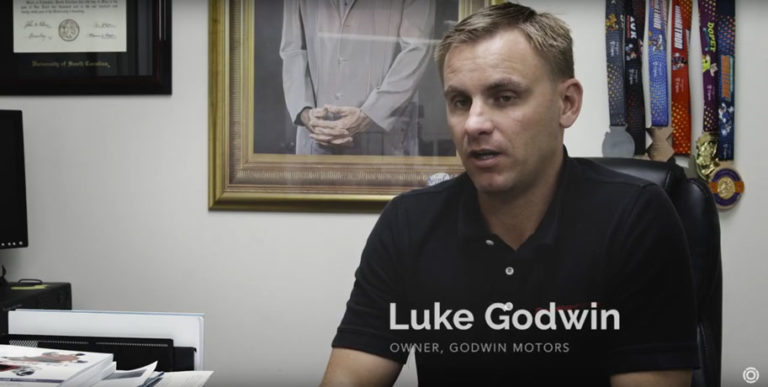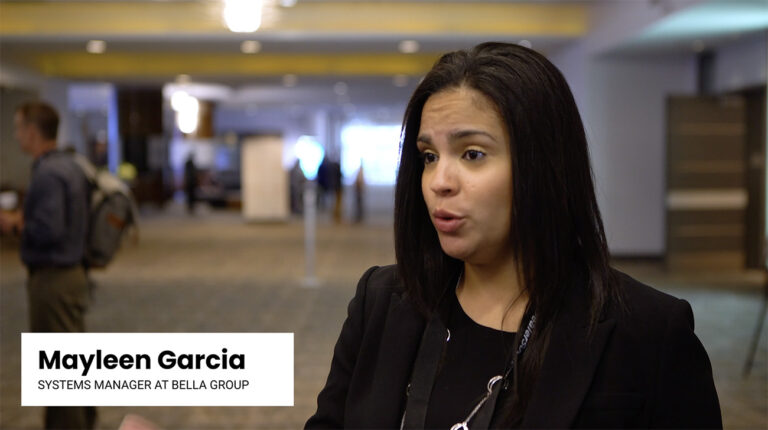In times like today, winning and doing more appraisals is critically important. Industry veteran lays out a four-step process for doing just that.
By Frank Scott
Trade-in appraisals are a boon to both new- and used-vehicle sales and a great way to acquire core used-car inventory without paying auction and transportation fees. And all it takes is saying the following to every customer who drives onto your lot:
“Hey, I see you drove up in that Dodge Charger (or whatever). We’re looking for used cars. Do you mind if we do an appraisal?”
Some salespeople might shy away from making that statement because they feel it adds yet another layer to negotiations, but they shouldn’t. Here are four steps to help you craft a comprehensive appraisal strategy and trade-in mindset that will yield positive results at your dealership.
Step 1: Create the Process
Make it part of your dealership’s culture to ask every sales and service customer whether you can appraise their vehicle. And make sure to record those interactions in your CRM. Additionally, make sure your customers accompany your appraisers as they inspect their vehicles. Here’s why:
- Customers are super honest about their cars and will tell your appraiser things that can help him or her make informed decisions about a vehicle’s value. For instance, a vehicle history report may show an “accident.” Was is a fender-bender or a major collision? Let your customer give you those details.
- Appraising a vehicle represents a great time to explain the process and factors that affect a vehicle’s value, such as accidents, mileage, the condition, the existence of a transferrable service contract, or even a missing set of keys.
- While you’re at it, share how you calculate appraisal values and whether you use guidebooks such as Kelley Blue Book or NADA Guides. Explain that you take into account the dealership’s transaction history with vehicles of a similar make, model, and condition. Also mention that you can solicit bids from your dealership network or wholesalers.
Step 2: Determine the Value
The first question your appraisers need to answer is whether the vehicle they’re evaluating is a retail or wholesale piece. If it’s wholesale, get the car’s book value — Manheim Market Report, Black Book, or Kelly Blue Book — and add or subtract from that value based on the vehicle’s history, condition, and other things that affect its price.
If it’s a retail piece, the following to-do list can help calculate its appraisal value:
- Gather transaction data to determine how much similar cars sold for at your dealership, in your group, and in your market over the prior 90 days. Inventory+, DealerSocket’s inventory management tool, can help by serving up actual vehicle transaction prices — even by vehicle trim level — and profit margins. The advantage of using Inventory+ is that it uses predictive algorithms based on real transaction data, not online prices.
- Check out the prices of similar cars listed for sale in your market area, which is typically within 100 miles of your dealership. Again, DealerSocket can help. Inventory+’s TrueTarget tool aggregates listing data from third-party websites like Cars.com, et cetera. Then DealerSocket’s TrueScore system, another feature within Inventory+, assigns individual vehicles a score based on that vehicle make’s sales performance at your dealership or in your market.
- Use book values, but make sure you’re on the same page as your customer. Chances are, your customer has already consulted KBB.com or NADA.com to figure out what the trade is worth. Make sure they tell you which source they used, so your appraisal is neither too low nor too high from the values they viewed. In other words, idiot-proof yourself.
- Combine all of the above, and you should have enough information to determine the car’s appraisal price.
Step 3: Justify Your Price
You’ve settled on an amount. Now you have to convince your customer it’s a reasonable price. Here’s what you need to show your customer:
- List items (tires, accidents, smoke odor, et cetera) that need to be replaced, repaired, serviced, or addressed — along with the dollar value of each item — to make the vehicle retail-ready.
- Print out the book value and listings of similar vehicles from the internet.
- Having backed out reconditioning costs, make out a check to the customer in the amount of the appraised price.
There’s no guarantee your customers will agree with your appraisal, but they may be more understanding if you say something like: “We love your car, but we are in the business to make a little bit of money, and this is the best we can do on your car.” That statement may even get them to say, “Yeah, I do need tires; I see where you’re coming from.” The key is to justify your appraisal.
Step 4: Check the Metrics
So you’ve improved your appraisal numbers, but are you winning enough appraisals? And what should your appraisal closing ratio be? Here are a couple of stats most dealerships monitor to get those answers:
- The number of appraisals you do should equal 150% of your new- and used-car sales. In other words, for every 100 new and used cars you sell, you should do 150 appraisals. If you’re way below that, you’re not conducting enough appraisals.
- A solid appraisal closing ratio is in the low 40% range.
During Times Like Today
With car sales expected to plunge during the COVID-19 pandemic, dealers undoubtedly can use all the help they can get. One major advantage of using Inventory+ to assist with appraisals is that its vehicle price data are based on real transaction data, not internet listings.
Remember, it’s dangerous to base your prices on just what the market listings are saying. That’s because some dealers could panic, drop their online price, and then send that car to auction. And you won’t know whether the price you see online represents a car sold at retail or one sent to auction. Following internet prices can be misleading and cause other dealers to panic as well, so don’t be part of the problem.
Frank Scott has been in the automotive industry for over 17 years and currently serves as a Senior Customer Success Manager at DealerSocket.
In all great moments of history when everything seemed bleak and that the bad times would never end, they did. The question is, will you be prepared?
By Patrick Mendoza
I’m not going to sugarcoat this: The current situation is bad, and it’s going to get worse.
You’ve heard this a hundred times the past couple of weeks, but these truly are unprecedented times. I’ve never seen such a drop in both the stock market and consumer purchasing, and such a rise in unemployment and concern.
The fall due to the pandemic all happened very quickly. Just one month ago, the stock market was at record levels, and analysts were predicting new auto sales to remain around the 17 million mark as it has been for the past several years.
Now, dealerships are closed due to government mandates and have had to furlough large swaths of their sales teams. Sales have fallen off a cliff, and now JP Morgan Chase is predicting auto sales to only reach 10.3 million units this year…10.3 million.
That’s bad. But you know what, this won’t last forever.
In all great moments of history when everything seemed bleak and that the bad times would never end, they did. The title of this post is “Hard Times Come Again No More,” which is the name of a sad song the soldiers used to march to in the Civil War. Think about how bad everything seemed then: brother vs. brother, the United States ripped apart with no hope of reconciliation. But guess what, we did, and we were stronger than ever.
It’s dark now, and, as King George VI said on the eve of World War II, “There may be dark days ahead,” but the industry will be back, and I think it will be back quickly.
Before long, customers will be back. Showrooms will turn their lights on again, and sales will rise.
The question is, will you be ready?
The downtime is your time to make sure you have everything in place for when the good times return. Do you have all of your customers and prospects in your CRM? Are you using a useful data mining tool to help you attract your customers back to your store? After all, it’s cheaper to retain an existing customer than attract a new one. What about your inventory? Are you stocking the most profitable vehicles for your lot?
Now, more than ever, it is your opportunity to be ready for when the people come back.
If you haven’t, or if you’re not sure, operators are standing by. It never hurts to call us and see if you’re ready. We’d love to help you.
Patrick Mendoza serves as director of corp. communications for DealerSocket, Inc. Email him at [email protected].
The business has navigated unprecedented hardships before, and DealerSocket’s First Pencil blog believes there’s no reason it won’t do it again.
By Gregory Arroyo
Remember the period between late 2007 and 2009, when the housing crash that caused the credit crisis led to the Great Recession? The market was tough to read, and the used-car guides were all over the map.
Dealers that bulked up on big trucks and SUVs were stuck with a lot full of them, as gas prices reached $4 a gallon and finance sources tightened up. Any car buyer with below-prime credit couldn’t get approved, as banks weren’t sure where car buyers — particularly those with investment properties — would land and finance companies were dead in the water.
The good news right now is we’re not experiencing any of those market dynamics. But news surrounding COVID-19 (a.k.a. the Coronavirus) has certainly heated up in recent days.
Hearing about Tom Hanks was disconcerting. So was hearing about the National Basketball Association’s decision to suspend the season, after Utah Jazz center Rudy Gobert became the first major professional athlete to test positive for the virus. Now his teammate, star Donovan Mitchell, has tested positive.
As of March 10, there have been at least 116,000 coronavirus cases worldwide. About 64,000 people have recovered, and 4,000 have died. Here in the United States, multiple states are under a state of emergency.
With all that said, the one thing I love about this business is how opposed it is to doom-and-gloom talk. In fact, just yesterday, the founder of a car dealer Facebook group I belong to urged all admins not to allow panic to take over the group.
“I don’t want negative talk about this affecting us,” he wrote.
It made me think of this great line from the first Avengers movie: “Until such time as the world ends, we will act as though it intends to spin on.”
Hey, consumers who need a new car (or used) today will still need it tomorrow. Still, it’s not business as usual, so preparation is vital.
So, if you’ve loaded up with inventory the past couple of months to take advantage of tax season, monitoring aging will be key. And if you’re part of a group that engages in group trading, it’s time to dig into your inventory management systems to ensure vehicles are on the right lots. It’s not time to panic, but you should have exit plans in place.
I recall a story told to me back in 2009. A dealer in the Northeast took on a bulk of pickups in trades just before things got bad. Having dumped $5,000 to $7,000 into the vehicles, he refused to take a loss at auction when things did — even though he was losing money each day those vehicles sat on his lot. His patience was rewarded, however, as he ended up grossing $2,000 to $5,000 by waiting out the storm for a couple of months. Americans do love their trucks and SUVs.
You also need to fire up that CRM. Hey, you know you have customers reaching the end of their finance, lease, or warranty term. Vehicles also need to be serviced. Maybe it’s an excellent time to offer free service pickup and return.
And if you’re a dealer that dipped your toe in the digital retail waters — or maybe offer test-drive deliveries — today’s uncertainty represents an opportunity to really test those strategies.
So, start promoting those customer conveniences, and make sure your digital retail button stands out. In other words, remove any conflicting calls to action on your vehicle details and dedicated landing pages. Banner promotions on your search results pages and VDPs are a must.
Now, when it comes to your employees, I suggest not sticking your head in the sand. Management teams need to get educated on this virus, and communication will be critical. Care also needs to be taken when it comes to the cleanliness of your showroom, employee offices, and common areas.
With all that said, here’s what I do know in all this uncertainty: Every time this business faces a severe hardship, it always seems to come out the other side a better industry. I’m sure that will be the case once again.
Gregory Arroyo is the former editor of “F&I and Showroom” and “Auto Dealer Today” magazines. He now serves as senior manager of strategic content for DealerSocket. Email him at [email protected].
Through new integrations with DealerSocket, Facebook believes its platform can help auto dealers turn car buyers into customers for life.
By Gregory Arroyo
Remember when the prevailing wisdom when it came to your dealership’s interactions on social media was to treat it like a cocktail party? Join the conversation and don’t sell, they said. Dealers haven’t lived by that standard for years, and now Facebook wants to make it even easier for you to market your inventory and post-purchase services.
In fact, the social media giant believes its family of apps can act as an extension of your CRM and turn car buyers into customers for life. Brent Parres, partner manager for Facebook’s automotive vertical, talked about Facebook’s new play during a recent webinar in which three new integrations with DealerSocket were revealed. He also shared the following stats to prove the platform is worth your attention and a bigger slice of your marketing budget:

- More than 50% of auto shoppers use the Facebook family of apps for auto-related activities: Facebook (57%), Instagram (60%), Messenger (55%), and WhatsApp (54%).
- 87% of U.S. auto buyers used social media during active auto research, with Facebook leading the way at 80%.
- Facebook (34%) is just as likely as branded search (34%) to be the first and last steps in auto research sessions.
The timing of Facebook’s push is interesting. Currently, approximately 34 states are considering changes to their privacy laws. Speaking at the Vehicle Finance Conference this past February, Mark Templin, president and CEO of Toyota Financial Services, said there is a real possibility the industry could be looking at “51 different standards” when it comes to protecting consumer data.
As I noted back in January, data remains our industry’s best opportunity as well as its greatest threat. Facebook knows all too well what I mean.
Remember all the scrutiny Facebook came under after the exposure of the Cambridge Analytica data scandal in March 2018. Well, it forced two significant shifts in how the social media giant manages its platform:
Shift No. 1: Facebook now views its family of apps as a single, privacy-focused messaging and social networking platform. For users, that means easily and securely communicating across Facebook, Messenger, Instagram, and WhatsApp. For dealer marketers, that means you can use the same budget to target car buyers across Facebook’s platform.
Shift No. 2: Facebook no longer allows marketers to use natively integrated data from third-party firms like Nielsen Data and Polk for custom audience targeting. That doesn’t mean you can’t take advantage of third-party data targeting outside of Facebook. The social network simply wants dealers to rely on their data (whether scrubbed by a third party or not) when operating on its platform, which brings me to the first of three key integrations between Facebook and DealerSocket:
Integration No. 1: Facebook Audience Integration with DealerSocket’s CRM
The new connection, a pilot of which was recently completed, will allow Facebook campaigns to sync with customer lists inside DealerSocket’s CRM. Parres said that translates into limitless audience segmentation. Think about what that means in terms of your operation’s post-purchase, customer-for-life efforts.
“Those systems will match data back and forth and update back and forth, so you don’t have to constantly update your audience lists,” Parres explained. “The fact that DealerSocket is going to set this up for you and refresh the data automatically … You can’t get any better than first-party data.”
Integration No. 2: Automotive Inventory Ads
DealerSocket will soon roll out an inventory export that automatically uploads a dealer’s entire inventory to Facebook to populate the social network’s Automotive Inventory Ads. Facebook serves up these ads based on availability, pricing, and intent. That means consumers looking for Volkswagen are shown models with the body styles that mean the most to them.
“It’s our best-performing product when trying to drive leads or sales on a specific piece of inventory, so this integration would put you at a unique advantage,” Parres said of the integration, which will be available to users of DealerSocket’s CRM, Inventory+, and DealerFire websites. The connection also means no more switching out creative, because the creative is the inventory out on the lot.
Integration No. 3: Facebook Direct Lead Post
Facebook Lead Ads, which take advantage of the social network’s audience selection and optimization products, allow dealers to customize lead forms that auto-populate based on a Facebook user’s profile data. Soon, through a new integration, the information collected from those lead ads will automatically post into DealerSocket’s CRM so the sales team can take immediate action.
“We know the longer a lead sits, the worst the potential outcome will be,” Parres said. “So, this would be a huge convenience for [dealers].”
What’s also interesting about Facebook’s timing is many dealers are reconsidering their investments in third-party lead sites. Maybe a little competition is what’s needed.
Gregory Arroyo is the former editor of “F&I and Showroom” and “Auto Dealer Today” magazines. He now serves as senior manager of strategic content for DealerSocket. Email him at [email protected].


